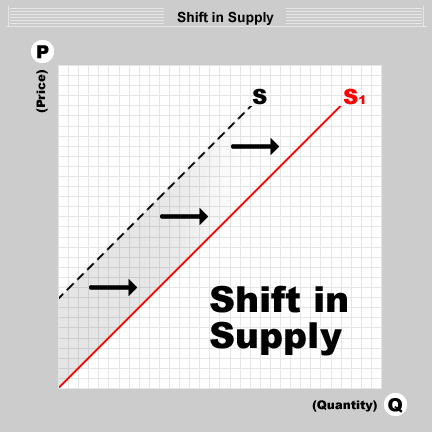Case Study 3.5e "Technology: A Shift in Supply"
Directions: Complete the following case study and record your answers on a separate sheet of paper.
Topic: The technological evolution as an example of a shift in supply.
Objective: To understand market supply shifters in an industry scenario.
The first computers were modeled after looms and used large punch cards. Electronic devices manually read the cards. A machine like this was used to help count and chart the 1890 U.S. Census. The year 1945 brought the fist digital computer, which current personal computers are modeled after. It was called ENIAC. It weighed over 60,000 pounds. It had to be reprogrammed for each new task. ENIAC was used primarily for military purposes. The UNIVAC was built following the ENIAC. UNIVAC had more commercial abilities.
Early computers were very heavy and large. They offered limited functions and required a lot of maintenance. Few people understood how to operate computers. Therefore, their practicality was limited. Computers were expensive and very limited in supply. In fact, in 1957 there were only 46 UNIVACs in use.
CS Question #1: In the beginning of computer technology, other than price, why was the supply of computers so limited?
Computers evolved with the development of transistors and integrated circuit technology. This new technology allowed for the creation of the first personal computers in 1975. Since then, computers have continued to develop very rapidly. As technology has advanced, the components of the computer have become smaller. This is because the number of transistors on computer chips directly affects the speed and ability of computer technology. As technology increases, the price decreases.
The development of operating systems like Windows and UNIX has opened up great possibilities for computers. These systems offer new ways to run multiple programs and manipulate data. This creates even more uses for computers. Additionally, as computer technology progresses, computers become easier to use.
CS Question #2: Why does running multiple programs create more uses for computers? Think of at least two specific examples.
The quantity of goods and services that are produced for sale depends on many factors, including price. A change in price will cause a movement along the supply curve. But a change in a factor other than price changes the entire supply curve. These other factors are known as supply shifters or determinants of supply. Supply shifters affect the behavior of buyers, sellers or both. In the case of computers, the supply has shifted (increased) for a number of reasons:
These specific supply shifters have caused the supply of computers to increase at every price. This makes computers more accessible and more affordable. This overall change in supply is represented by a shift in the entire supply curve. An increase in supply is demonstrated by a shift in the supply curve to the right, as seen below.

CS Question #3: Why has the price of computers decreased if the demand has clearly increased?
Computers are used by 74.4 percent of American children at school or at home, compared to 30.2 percent in 1984. The percentage of American households that have a computer is 36.6, compared to 8.2 percent in 1984. Income is a factor of computer ownership. Seventy-five percent of American households with a yearly income of at least $75,000 have a computer, while only 15.6 percent of American households with a yearly income under $25,000 have one.
The median of computer use on the job is 50.3, or about half of the working population. Education plays a big role in work-related computer use. Seventy-five percent of workers with a bachelor's degree or higher use a computer, which is almost 25 percent above the median.
CS Question #4: Why do you think more educated workers have such a high rate of computer use at work?
Further Thought:
Date source: computer use and ownership, U.S. Census 1997 Current Population Survey.